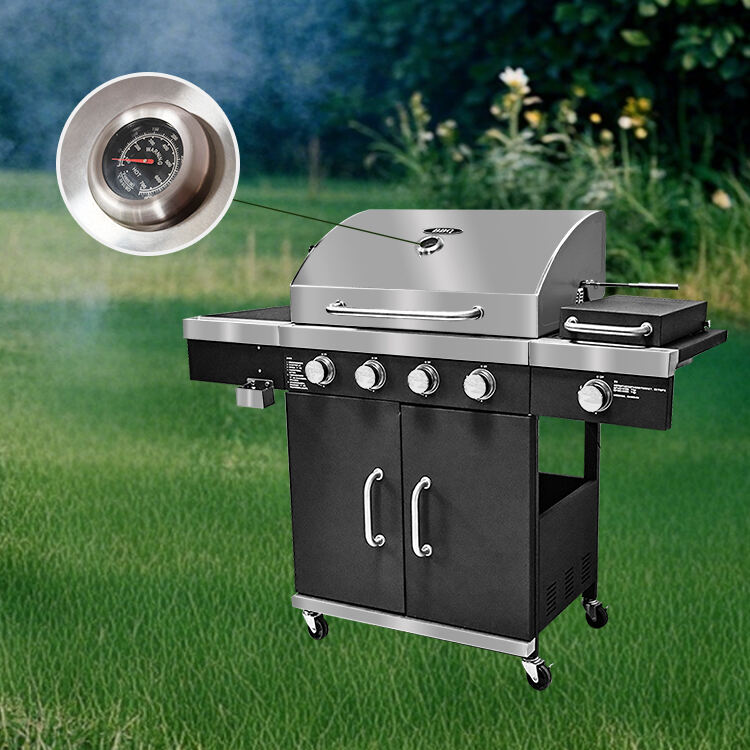The Ultimate Guide to Modern Outdoor Kitchen Grills
Transform your backyard into a culinary paradise with the perfect outdoor kitchen grill. As outdoor entertaining continues to evolve, the demand for sophisticated cooking spaces has sparked an explosion in grill options. From sleek built-in models to versatile freestanding units, today's outdoor kitchen grills offer professional-grade features that rival indoor cooking capabilities.
Whether you're an aspiring outdoor chef or a seasoned grillmaster, choosing the right outdoor kitchen grill requires careful consideration of your cooking style, space requirements, and entertainment needs. Let's explore the various options available and help you make an informed decision that will enhance your outdoor living space for years to come.
Types of Outdoor Kitchen Grills
Built-in Gas Grills
Built-in gas grills represent the cornerstone of luxury outdoor kitchen design. These permanent installations offer seamless integration with countertops and storage components, creating a cohesive cooking station. High-end built-in models typically feature multiple burners, precise temperature controls, and specialized cooking zones for maximum versatility.
Premium built-in grills often include infrared searing stations, rotisserie systems, and smoke boxes for enhanced flavor profiles. The permanent nature of these installations requires careful planning but rewards with professional-grade performance and impressive durability.
Freestanding Grill Islands
For those seeking flexibility without sacrificing functionality, freestanding grill islands provide an excellent solution. These self-contained units combine the cooking power of built-in models with the convenience of mobility. Many freestanding outdoor kitchen grills include additional workspace, storage drawers, and even refrigeration options.
Modern freestanding units often feature weather-resistant materials like stainless steel and composite surfaces, ensuring longevity in outdoor environments. The ability to reposition these grills makes them ideal for evolving outdoor spaces and rental properties.

Essential Features and Technologies
Heating Systems and Fuel Options
Contemporary outdoor kitchen grills utilize various heating technologies to achieve optimal cooking results. Natural gas and propane remain popular choices, offering consistent heat and precise temperature control. Many high-end models now incorporate multiple heating zones, allowing simultaneous cooking at different temperatures.
Hybrid grills that combine gas with charcoal or wood-burning capabilities provide versatility for different cooking styles. Advanced infrared technology ensures even heat distribution and superior searing capabilities, while specialized smoke boxes add authentic barbecue flavor.
Smart Technology Integration
The latest outdoor kitchen grills embrace smart technology to enhance the cooking experience. WiFi-enabled temperature monitoring, smartphone controls, and automated cooking programs help maintain consistent results. LED control panels and interior lighting improve visibility during evening cooking sessions.
Some advanced models feature built-in meat probes with wireless monitoring, ensuring perfect doneness without constant supervision. These technological innovations make it easier than ever to achieve restaurant-quality results in your backyard.
Size and Space Considerations
Cooking Surface Requirements
Selecting the appropriate size for your outdoor kitchen grill depends largely on your entertaining needs. A minimum of 400 square inches of primary cooking space typically suffices for family meals, while larger gatherings may require 600 square inches or more. Consider secondary cooking areas, warming racks, and side burners when calculating total space requirements.
Remember to factor in clearance space around the grill for safe operation and comfortable food preparation. Many homeowners find that slightly oversizing their grill provides welcome flexibility for larger events while maintaining efficient operation for daily use.
Installation Space Planning
Proper planning for your outdoor kitchen grill installation ensures both safety and functionality. Allow adequate ventilation space behind and above the grill, particularly for built-in models. Consider prevailing winds and proximity to structures when positioning your grill to minimize smoke issues.
Include sufficient counter space on both sides of the grill for food preparation and plating. Many designers recommend a minimum of 24 inches on either side, with additional space for accessories and appliances as needed.
Material Quality and Durability
Construction Materials
Premium outdoor kitchen grills typically feature commercial-grade stainless steel construction for maximum durability and corrosion resistance. Look for 304-grade stainless steel in primary cooking components and exterior surfaces to ensure longevity in outdoor conditions.
Heavy-gauge materials in grill grates and burners promote better heat retention and distribution. Cast aluminum and brass components offer excellent durability while reducing overall weight, particularly important for freestanding units.
Weather Resistance Features
Quality outdoor kitchen grills incorporate numerous features to withstand environmental challenges. Sealed burner systems prevent moisture infiltration, while double-lined hoods help maintain consistent cooking temperatures regardless of external conditions.
Look for models with weather-resistant control panels and electrical components rated for outdoor use. High-quality cover systems provide additional protection during severe weather and extended periods of non-use.
Frequently Asked Questions
How much should I expect to invest in a quality outdoor kitchen grill?
Quality outdoor kitchen grills typically range from $2,000 to $10,000 or more, depending on size, features, and installation requirements. Built-in models generally command higher prices due to their permanent nature and professional-grade construction. Consider the long-term value and durability when evaluating investment levels.
What maintenance is required for an outdoor kitchen grill?
Regular maintenance includes thorough cleaning after each use, periodic deep cleaning of burners and grates, and seasonal inspection of gas lines and connections. Professional servicing may be recommended annually for built-in models. Proper cover use and cleaning help extend grill life and maintain performance.
How long should an outdoor kitchen grill last?
With proper maintenance and care, a high-quality outdoor kitchen grill should last 10-15 years or more. Premium stainless steel construction and regular maintenance significantly extend service life. Many manufacturers offer extensive warranties on key components, particularly for higher-end models.

